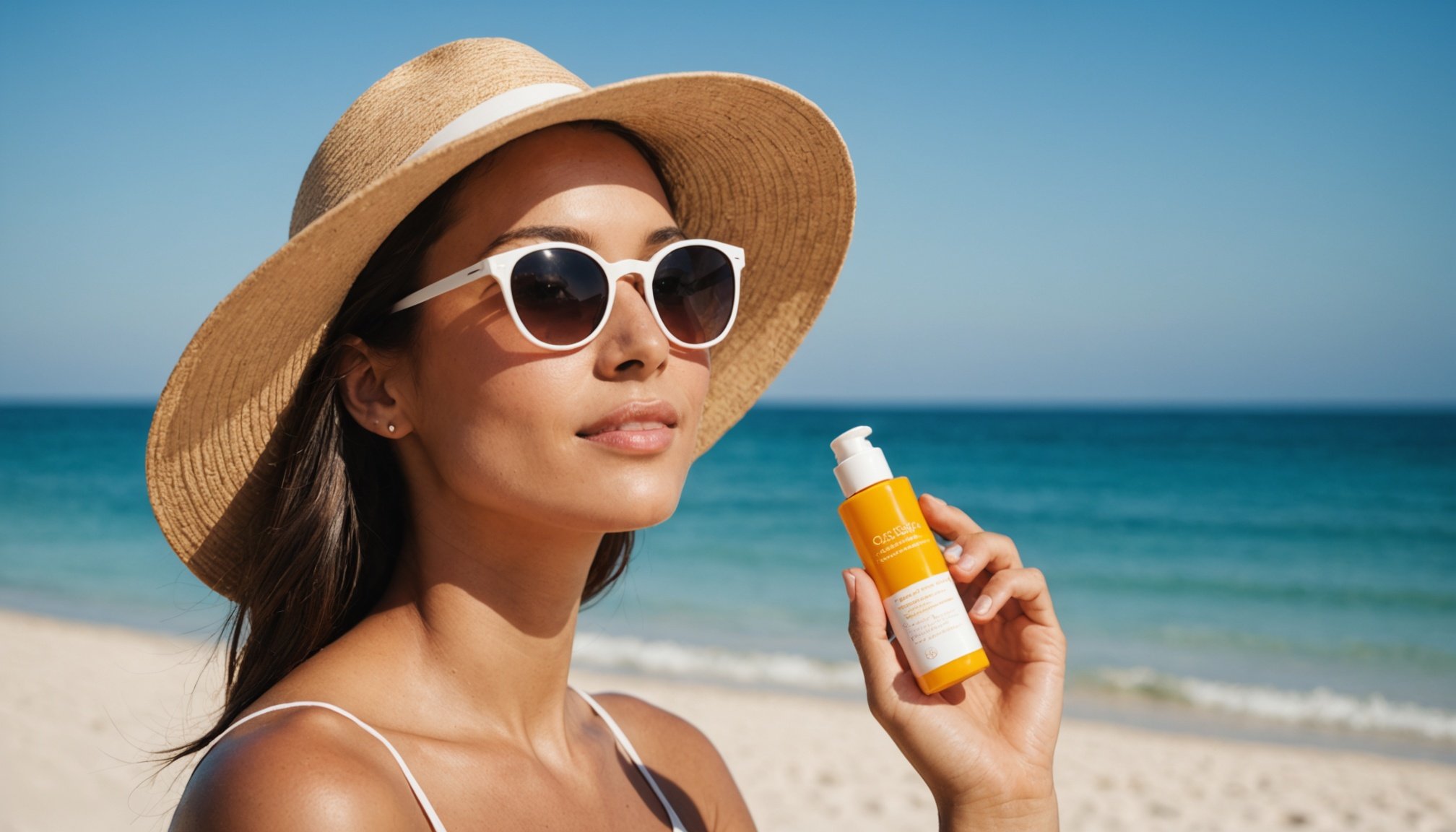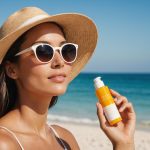Understanding Different Skin Types
Different skin types require unique care, especially when it comes to sun protection. The primary skin types include normal, oily skin, dry, sensitive, and combination. Understanding your skin type is essential in selecting the right sunscreen that absorbs effectively and suits your needs.
Oily Skin
For those with oily skin, sunscreen selection can be tricky. The excess sebum can cause sunscreens to feel greasy or heavy. Opt for formulations specifically crafted for oily skin; these are typically labeled as “oil-free” or “non-comedogenic.”
In the same genre : Ultimate guide to sustainable fashion: key factors for selecting eco-friendly recycled clothing
Dry Skin
Individuals with dry skin need sunscreens that offer hydration while providing UV protection. Cream-based or lotion sunscreens are generally beneficial as they help retain moisture without causing dryness.
Sensitive Skin
Sensitive skin demands extra caution. It’s crucial to find sunscreens free of irritants like fragrances and harsh chemicals. Mineral-based sunscreens with zinc oxide or titanium dioxide are often recommended for their gentle protection.
This might interest you : Transform your skincare for every season: essential tips for year-round radiance
Combination Skin
Handling combination skin involves striking a balance. Consider using different sunscreens for various face areas or choose a formulation designed for combination types.
Be mindful that each skin type can influence the absorption and efficacy of sunscreens, necessitating careful consideration of ingredients and specific formulations suited to personal needs.
Understanding Sunscreen Ingredients
When selecting a sunscreen, the ingredients play a critical role in its effectiveness and suitability for different skin types. Beneficial active ingredients, such as zinc oxide and titanium dioxide, are often found in mineral sunscreens and offer broad-spectrum protection against both UVA and UVB rays. These ingredients are gentle on the skin and ideal for those with sensitive skin as they cause minimal irritation.
Chemical sunscreens, in contrast, contain active ingredients like avobenzone and oxybenzone, which absorb UV rays. These are typically more lightweight and easier to apply, but certain chemical components may aggravate sensitive skin or cause allergic reactions. Therefore, it’s essential to read labels carefully.
When it comes to choosing sunscreen for sensitive skin, opt for fragrance-free and hypoallergenic formulations to minimise the risk of irritation or allergies. Products labeled as “broad-spectrum” protect against both UVA and UVB rays. Meanwhile, “water-resistant” sunscreens maintain their efficacy after exposure to water or sweat, although they still require reapplication after swimming or excessive sweating.
Understanding these ingredients can empower users to select a sunscreen that fits their specific needs, promoting confidence in their sun protection choices.
Importance of SPF Ratings
Selecting the correct Sun Protection Factor (SPF) is vital for effective UV protection and is a common consideration in sunscreen selection. SPF ratings indicate the level of protection a sunscreen offers against UVB rays, the primary cause of sunburn. Lower SPF levels protect for less time, requiring more frequent application, while higher ratings offer extended protection.
Broad-spectrum sunscreens are recommended as they provide protection against both UVA and UVB rays, crucial for preventing long-term skin damage and premature aging. For day-to-day activities, an SPF level of 30 is often sufficient for most skin types, providing 97% UVB protection. However, prolonged outdoor activities may necessitate higher ratings, like SPF 50, ensuring comprehensive defense against sun exposure.
Understanding the SPF number is essential for informed decisions. For example, while SPF 15 filters out about 93% of UVB rays, SPF 50 blocks approximately 98%. Choosing based on your activity level and skin type helps maximize UV protection while minimizing the potential for sunburn. Always ensure even application regardless of SPF levels to maintain optimal efficacy throughout the day.
Choosing the Right Sunscreen Formulation
Selecting the ideal sunscreen formulation is vital for ensuring effective and comfortable sun protection, especially considering the variety of mineral vs chemical sunscreen options available. Mineral sunscreens use active ingredients like zinc oxide and titanium dioxide, sitting on the skin’s surface to reflect UV rays. These are often chosen for their gentle, broad-spectrum protection, suitable for sensitive skin.
Chemical sunscreens, on the other hand, absorb into the skin and convert UV rays into heat. They typically offer lighter formulations and are easier to spread, making them a preferred choice for everyday use. However, certain chemicals can cause irritation, making them less ideal for sensitive skin.
Textures and Formulations
In terms of texture, lotions and creams are suited for dry skin, offering additional hydration. Gels and sprays appeal to those with oily skin due to their less greasy finish. Finally, consider a water-resistant formulation if it’s for use in active or sweaty conditions, ensuring ongoing protection despite moisture.
Special Considerations for Sensitive Skin
For those with special skin considerations, choosing non-comedogenic products minimises the risk of clogging pores, and opting for fragrance-free options further reduces potential irritation. Always patch-test new products to ensure they suit your skin type.
Application Tips for Maximum Effectiveness
Proper sunscreen application is critical to ensuring full UV protection. Begin with a generous quantity, about a teaspoon for the face, and ensure even coverage by avoiding common areas like ears and neckline. How you apply sunscreen can significantly influence its effectiveness.
Layering Sunscreen
To incorporate sunscreen into your skincare routine effectively, apply it after moisturizing. For those using makeup, consider layering sunscreen as the last step before foundation. This method maintains the coverage necessary to protect skin from harmful rays.
Reapplication Guidance
Regular reapplication is equally crucial, especially after sweating, swimming, or prolonged sun exposure. Generally, it’s recommended to reapply every two hours for maximum efficiency. Timely reapplication is vital for sustained UV defense, maintaining sunscreen application benefits even in challenging conditions.
To ensure thorough protection, consider these guidelines without exception. Skipping steps in your sunscreen routine risks diminishing its effectiveness. The practice of diligent, timely application and reapplication helps maximize protection, empowering you to enjoy outdoor activities with confidence. Implementing these strategies will safeguard your skin, accommodating different skin types and their unique concerns.
Ingredients to Look For and Avoid
Understanding sunscreen ingredients is crucial for optimizing your sun protection strategy. Active ingredients like zinc oxide and titanium dioxide are essential in mineral sunscreens. These components provide reliable broad-spectrum protection against both UVA and UVB rays, making them ideal for sensitive skin due to their low irritation potential.
For those with sensitive skin or allergies, selecting fragrance-free and hypoallergenic formulations is fundamental. Common allergens such as fragrances and certain chemicals like oxybenzone can trigger reactions. Avoid these to minimize skin irritation.
When examining sunscreen labels, it’s vital to understand terms like “broad-spectrum,” which indicates protection from both UVA and UVB rays, crucial for preventing short-term and long-term sun damage. “Water-resistant” refers to a sunscreen’s ability to remain effective after exposure to water or sweat for a specified duration.
Beneficial Ingredients
- Zinc oxide: Offers broad-spectrum protection and is gentle on sensitive skin.
- Antioxidants: Protect skin by reducing oxidative stress.
Ingredients to Avoid
- Oxybenzone: Known for causing skin sensitivity or allergies.
- Fragrances: Common irritants to sensitive skin types.
Choosing sunscreens with beneficial ingredients while avoiding potential irritants can significantly improve skin comfort and protection.











